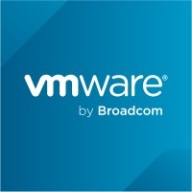

VMware Aria Automation and Prisma Cloud by Palo Alto Networks are key competitors in the cloud automation and security management category. VMware Aria Automation takes the lead in deployment simplicity for on-premises setups, while Prisma Cloud excels in multi-cloud environments with strong alert systems and third-party integration.
Features: VMware Aria Automation is known for effective mass parallel administration, log aggregation, and integration with AD groups for simplified user access. It also provides custom service designs through vCO extensions. Prisma Cloud shines with its dynamic workload identity, application dependency maps, and seamless integration with AWS and other third-party tools, enhancing its automated defenses.
Room for Improvement: VMware Aria Automation needs better documentation, improved integration with non-VMware systems, and enhanced usability for non-technical users. Configuration management can be challenging. Prisma Cloud could benefit from a more intuitive user interface and better automation in threat remediation and runtime security. Improvements in dashboard integration and deployment ease are needed for a more user-friendly experience.
Ease of Deployment and Customer Service: VMware Aria Automation is praised for its straightforward deployment in on-premises environments and generally strong tech support, though deep issues may require escalation. Prisma Cloud is highly adaptable for public and hybrid cloud deployments, but tech support experiences can vary, and there’s room for improvement in responsiveness and support processes.
Pricing and ROI: VMware Aria Automation is considered a pricey investment, justified by its speed and provisioning benefits, though its pricing models could be clearer. Prisma Cloud, also on the higher end of pricing, provides extensive security management value. Both solutions are credited with delivering significant ROI by streamlining operations and reducing deployment times.
It eliminates the need for additional hardware, making it a financially and technically sound investment.
Reputation and data security are the two most important things to a financial institution.
We may have prevented a security breach with remediation of the findings.
They can respond with technical documentation or pass on the case to the next level because it requires the development of a new feature or changing a feature due to a bug.
Anywhere we raise a tech case, they revert back within an hour.
Support is not just good; it's excellent.
We never had major issues to report or request support.
Scalability is a strong aspect; we have never experienced issues with it.
Scalability-wise, I rate the solution a nine out of ten.
We haven't had any issues scaling the solution.
I would rate it a ten out of ten for stability.
It provides excellent stability capabilities.
Most of the time, when the client requires data, it is not available.
Prisma Cloud is an excellent tool.
We could have deployed the runtime monitoring with Prisma Cloud by Palo Alto Networks, but within our organization at our company, it was very difficult to find who would be the owner for the alerts.
Even though documentation was available, it took a while for a new person to understand what integration meant, what will be achieved after the integration, or how the integration needed to be done on the Azure or AWS side.
It operates for both of my products, however, as a product, it is complicated to integrate and automate with other products.
The cost was not on the higher side.
If you are using a single tool like Prisma Cloud, with a single license, you can monitor all environments, such as Google Cloud, Azure, AWS, and Oracle Cloud.
Prisma Cloud isn't cheap.
Prisma Cloud excels by offering a comprehensive solution within a single dashboard. This unified approach addresses all our requirements, making it the most advantageous aspect of this tool.
There is a wide range of integrations, and the compatibility with various cloud providers is very useful.
It provides a single pane of glass.
It helps us automate the workflow of creating many VMs and the TensorFlow key method.
We have strong regulations for maintaining compliance and mitigating risks with this product.
| Product | Market Share (%) |
|---|---|
| Prisma Cloud by Palo Alto Networks | 10.0% |
| VMware Aria Automation | 0.5% |
| Other | 89.5% |

| Company Size | Count |
|---|---|
| Small Business | 36 |
| Midsize Enterprise | 22 |
| Large Enterprise | 56 |
| Company Size | Count |
|---|---|
| Small Business | 32 |
| Midsize Enterprise | 24 |
| Large Enterprise | 130 |
Prisma Cloud by Palo Alto Networks provides comprehensive cloud-native security solutions. It covers dynamic workload identity, automated forensics, and multi-cloud protection, ensuring robust security across diverse cloud platforms.
Prisma Cloud delivers advanced capabilities for managing cloud security across AWS, Azure, and GCP platforms. It offers dynamic workload identity creation, real-time monitoring, and seamless integration into CI/CD pipelines. With automation, centralized dashboards, and enhanced visibility, users effectively manage security misconfigurations and vulnerabilities. While optimizing cloud environments through runtime protection and compliance, Prisma Cloud faces challenges with its navigation, pricing, and limited automation capabilities. Users seek improvements in API security, role-based access controls, and documentation quality, emphasizing the need for enhanced customization and reporting features.
What are the important features of Prisma Cloud?
What benefits or ROI should users consider in reviews?
Industries like finance and telecom rely on Prisma Cloud for managing cloud security posture and container security. Teams utilize its capabilities across hybrid and multi-cloud settings to ensure compliance and robust threat protection. Features like misconfiguration detection and runtime monitoring are critical in promoting security objectives in these sectors.
VMware Aria Automation is a cloud management tool that allows companies to simplify their cloud experience through a modern automation platform. The solution is designed to deliver self-service clouds, multi-cloud automation with governance, and DevOps-based security and infrastructure management. It helps organizations improve IT agility, efficiency, and productivity through its various features.
VMware Aria Automation has multiple use cases that include the following:
VMware Aria Automation Features
VMware Aria Automation has various features that allow users to easily perform operations. Some of the solution's capacities include:
VMware Aria Automation Benefits
VMware Aria Automation offers its users various benefits. Some of the biggest advantages that the solution brings to companies that utilize it include:
Reviews from Real Users
Awais J., CTO/CEO at a tech services company, likes VMware Aria Automation because it saves a lot of time, provides more visibility, and has extensive automation capabilities.
An IT consultant at a government rates VMware Aria Automation highly because the product gives you flexibility to analyze and consume resources.
We monitor all Cloud Security Posture Management (CSPM) reviews to prevent fraudulent reviews and keep review quality high. We do not post reviews by company employees or direct competitors. We validate each review for authenticity via cross-reference with LinkedIn, and personal follow-up with the reviewer when necessary.